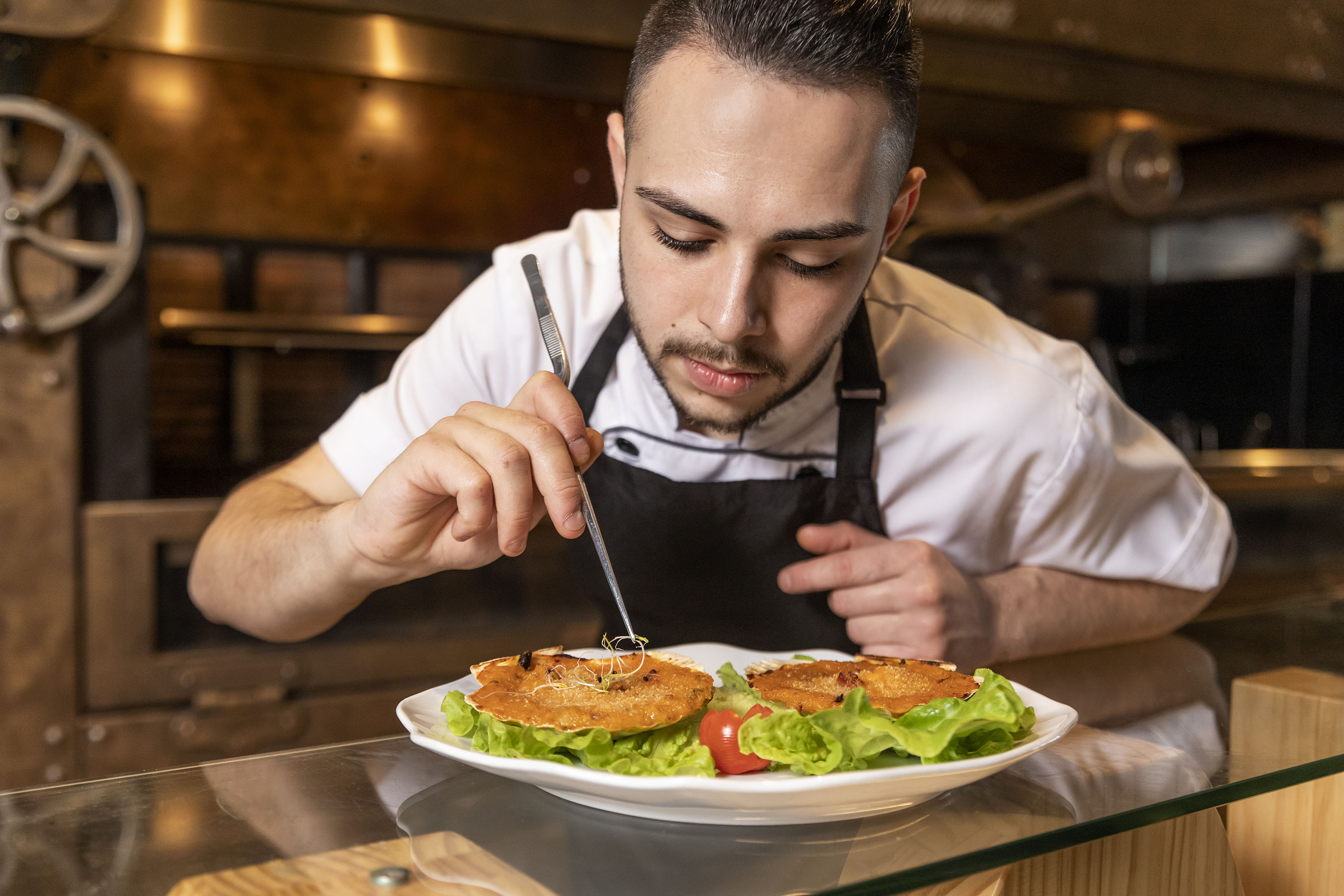
Greater Sea's Scallop
In this pilgrim's head from Burgundy (15th century), preserved in the Metropolitan Museum of Art in New York, the symbol of the pilgrimage to Santiago, created by the Compostela Church nine hundred years ago, stands out. The pilgrims kept the scallop as a sign of reaching the Land's End, the Greater Sea. Here, on the coasts of Fisterra and Muxía, they were collected on the shore, in the Middle Ages they were already sold in Santiago and they were also made of lead and other metals. The Jacobean symbol became popular and today there are more than five hundred municipalities in France that have shells on their shields, almost one hundred in Germany, more than fifty in Portugal, thirty in Switzerland or the Czech Republic... They are the traces of a way that goes until the end.


The Most Ancient Scallop
This pilgrim's scallop, found in the basement of the Santiago Cathedral, dates back to before 1120. It was shortly before when the symbol was created: between 1099, when the crusaders took Jerusalem and opened the pilgrimage to the holy places of Christianity, and 1106, the year in which the miracle of Apulia, Italy, takes place, where a pilgrim's shell heals a knight (Codex Calixtinus). Given the popularity of the palms that those who return from Jerusalem bring, Compostela creates the symbol of the scallop.

From the Ocean Shore
«In this place called Fisterra, located next to the Oceanus Occidentalis, the shoreline is full of molluscs that pilgrims usually carry...» This was the story of the Cristoph Guzinguer, an Austrian man who made a pilgrimage to Fisterra and Muxía in 1654. It was the abundance of these shells that led Gelmírez, Archbishop of Compostela between 1100 and 1136, to devise a cheap emblem for the Jacobean pilgrimage: the sign of having arrived at the Greater Sea, at the Land's End.

Bocatto di cardinale
The scallop is an exquisite bite. In Galicia, molluscs have been eaten since prehistoric times, as proven by the shell deposits and other remains of food found in Bronze Age sites. But scallops seem to spread across the Galician cuisine much later. We commonly prepare them in the oven, with or without breadcrumbs, like those of the chef Alfonso Antelo from Muxía, but also in empanadas, perhaps like the one represented in the Portico of Glory.

Chascarraschás
This title is an onomatopoeia, a word in Galician language, which refers to the sound of scallop shells when rubbed against each other. They are an ancestral instrument, but still very much alive in traditional Galician music, accompanying the singing or the sound of a bagpipe, as reflected in this popular couplet: «Eu teño un canciño bonito abofé, / que baila a muiñeira na punta do pé, / na punta do pé dá pinchos pra atrás / e toca nas cunchas o chascarraschás» («I have a cute little dog, I attest, / who dances the muiñeira on the tip of his foot, / on the tip of his foot he somersaults backwards / and plays the 'chascarraschás' with the shells»).

The Confusion of Linneo
The Swedish Linnaeus (1707-1778) was the creator of the scientific classification of living beings, with a binomial system in Latin, which indicates genus and species. In 1758, Linnaeus named the scallops Pecten jacobaeus, but this is an endemic species of the Mediterranean. Shortly after, the scientist designated as Pecten maximus the endemic species of the Galician coasts and the entire European Atlantic, which are larger than the Mediterranean ones.
On the map: distribution of the two species in Europe (Ramón Cabello et al. 2001).

